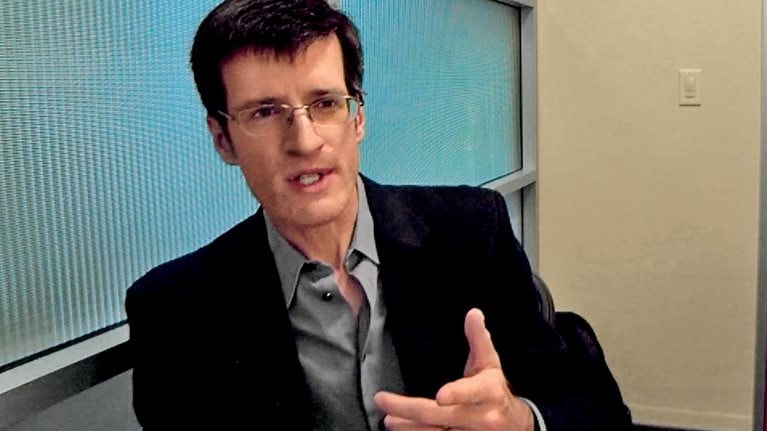It’s only natural to seek certainty, especially in the face of the unknown. Long ago, shamans performed intricate dances to summon rain. It didn’t matter that any success they enjoyed was random, as long as the tribe felt that its water supply was in capable hands. Nowadays, late nights of number crunching, feasts of modeling, and the familiar rituals of presentations have replaced the rain dances of old. But often, the odds of generating reliable insights are not much better.
Perhaps that’s because our approach to the hardest problems—and the anxiety those problems create—is fundamentally misdirected. When most of us face a challenge, we typically fall back on our standard operating procedures. Call this “managing the probable.” In much of our education, and in many of our formative experiences, we’ve learned that some simple problems have one right answer. For more complicated problems, accepted algorithms can help us work out the best answer from among available options. We respond to uncertainty with analysis or leave that analysis to the experienced hands of others. We look for leaders who know the way forward and offer some assurance of predictability.
This way of approaching situations involves a whole suite of routines grounded in a mind-set of clarity if not outright certainty. To that end, they are characterized by sharp-edged questions intended to narrow our focus: What is the expected return on this investment? What is the three-year plan for this venture? At what cost are they willing to settle? But asking these kinds of questions, very often legitimate in business-as-usual settings, may constrain management teams in atypical, complex situations, such as responding to a quickly changing market or revitalizing a privatized utility’s culture. Our tendency to place one perspective above all others—the proverbial “fact-based view” or “maximizing key stakeholders’ alignment”—can be dangerous. All too often, we operate with an excessively simple model in enormously messy circumstances. We fail to perceive how different pieces of reality interact and how to foster better outcomes.
Moving from “managing the probable” to “leading the possible” requires us to address challenges in a fundamentally different way. Rather than simply disaggregating complexities into pieces we find more tractable, we should also broaden our range of interventions by breaking out of familiar patterns and using a whole new approach that allows us to expand our options, experiment in low-risk ways, and realize potentially outsized payoffs. But be warned: leading the possible involves coping with our own anxieties about an unknowable and uncontrollable world. A few simple habits of mind presented here can prod us toward thinking and acting differently. These should not be considered a checklist of to-dos; indeed, the very point is to move beyond a check-the-box mentality.
Unexpected possibilities
We relish stories of unexpected possibilities—little bets that created huge and unforeseen benefits. Twitter, for instance, was born when its creators noticed how alive and engaged they felt when communicating with each other in real time over SMS. The concept was brilliant, and the platform has reshaped the way the world communicates. But the initiative arose from brainstorming rather than an elaborate business plan. Tweeting caught on, in large part, because it grants its users freedom. In fact, Twitter cofounder Evan Williams has explained that, in general, his rule is to do less. We can’t foresee how uncertain conditions will unfold or how complex systems will evolve, but we can conduct thoughtful experiments to explore the possibilities.
That’s what happened at the birth of Emirates Airline. We’ve grown accustomed to thinking of Dubai as a major transit hub, but its development was hardly inevitable. During the mid-1980s, Gulf Air, the area’s regional flag carrier at the time, began to cut back its services to the city. Faced with the possibility of hundreds of stranded passengers in the short term, and the threat of long-term decline, the government tried something new. With a small infusion of cash (by airline standards), it leased two planes with crews from another airline and converted a couple of jets from the royal fleet for commercial use. In time, the fledgling Emirates Airline flew high. Traffic through Dubai International Airport seeded a local tourism industry and, on the cargo side, a logistics platform. This in turn attracted ever more traffic in what became a fantastically virtuous cycle. Not even the most optimistic of the airline’s founders could have reasonably imagined that Emirates Airline would be an industry giant—or that Dubai would become the world’s busiest international-passenger airport.
The leaders of these new ventures used unconventional approaches to try new, unexpected moves—with enormous payoffs. But it’s not just large innovations that make a difference. When people think in new ways, very small shifts can have unexpected and significant consequences.
Habits of mind
Uncertainty can’t be solved with pat procedures; it takes new habits of mind to lead the possible. In our experience, three such habits stretch the capabilities of leaders and help them not only to lead the possible but also to delight in it.
Ask different questions
The questions we ask emerge from our typical patterns of thought. We focus on narrowing down a problem so that we can find a solution. But we often fail to notice that in doing so we constrain the solution and make it ordinary. Asking different questions helps slow down the process. We begin to take in the full range of data available to us and in consequence have a significantly wider set of possible options. Examples of such questions include the following:
- What do I expect not to find? How could I attune to the unexpected?
- What might I be discounting or explaining away a little too quickly?
- What would happen if I shifted one of my core assumptions on an issue, just as an experiment?
The two of us have seen this approach applied successfully to real-life situations. For example, a government agency struggling with ever-shrinking resources and ever-increasing demands had asked two questions for years: “How will we get enough money to meet the demands?” and “Which services can we cut to stay within our budget?” The senior team, tired of running in circles searching for untapped financing streams or arguing over which core services to cut, intentionally explored a new idea: “How can we share our workload with others so that our current financing becomes sufficient without cutting back on services?” This new question significantly widened the available possibilities, and the organization set out to conduct a long series of small-scale experiments with businesses, other government departments, and community members to keep the same level of service for far less money. Asking a different question opened up dynamic possibilities.
Take multiple perspectives
No one can predict when or where the next vital idea will emerge, but we can support an expansive view of our present conditions. We can start by pushing back on our natural inclination to believe that the data we see are all the data we need and by distrusting our natural craving for alignment. Considering multiple perspectives opens up our field of vision. Diversity might create more disagreement and short-term conflict, but in an uncertain environment, a more expansive set of solutions is desirable.
We can try these approaches:
- Take the perspective of someone who frustrates or irritates us. What might that person have to teach us?
- Seek out the opinions of people beyond our comfort zone. The perspectives of, among others, younger people, more junior staff, and dissatisfied customers can be insightful and surprising.
- Listen to what other people have to say. We should not try to convince them to change their conclusions; we should listen to learn. If we can understand their perspectives well enough, we might even find that our own conclusions change.
New perspectives often arise from unexpected sources. At a large consumer-goods organization that prided itself on its customer-centric approach, the leadership team rightly asserted that it understood the perspectives of its diverse customer base and key suppliers. The team was asked whether any group—anywhere at all—“just wasn’t getting it.” Rueful laughter followed; of course there was such a group: a set of consumers written off some time ago and now never considered. Taking a new approach, the leaders probed that group’s perspectives, not to win over these consumers or to sell them something but to learn from them. The leaders discovered the possibility of a whole new product line that slipped easily into the company’s supply chain but hadn’t been on the horizon previously. Taking multiple perspectives radically opened up a new set of possibilities.
See systems
This approach is about seeing patterns of behavior, and then developing and trying small “safe-to-fail” experiments to nudge the system in a more helpful direction. Leaders are best served when they get a wider, more systemic view of the present. Yet we’ve been trained to follow our natural inclination to examine the component parts. We assume a straightforward and linear connection between cause and effect. Finally, we look for root causes at the center of problems. In doing these things, we often fail to perceive the broader forces at work. The more we can hold on to the special features of systems, the more we can create experiments in unexpected places to open up new possibilities.
To best understand systems, it’s helpful to resist the urge to disaggregate problems and to solve them right away. Here are some alternatives:
- We can hold opposing ideas without reconciling them. If it looks as though we’re confronting an either/or choice, we can reconsider our narrow framing and wonder what we’re missing.
- We shouldn’t waste time arguing about the best solution; instead, we can pick several good but different solutions and experiment with them all in a small way.
- We can give up the hunt for the root cause and instead look to the edges of an issue for our experiments. The system’s center is most resistant to change, but tinkering at the periphery can deliver outsized returns.
Elements in a system can be connected in ways that are not immediately apparent. For example, call-center employee turnover is notoriously high across industries—an expensive drain on this particular system. Many managers have tried to develop better hiring practices to eliminate some of the turnover before it begins; others beef up their HR departments to deal with the inevitable churn.
Would you like to learn more about our People & Organizational Performance Practice?
One executive, looking at the edges of the issue in his district, noticed that many skilled people outside the workforce care for their children or sick parents. He experimented with ways to bring these people into his call center in a flexible way: working from home, setting their own shift lengths and hours (a revolutionary idea in call centers), and managing their own performance targets. Over time, he nudged the model so that it became enormously successful. After 12 months of the new system, when the call-center staff had been ramped up to more than 200 employees, upward of 90 percent of them felt engaged with their work—a remarkable achievement in the traditionally transient and disengaged world of call centers—and turnover fell to under 10 percent a year. Looking at the whole system and experimenting with (and learning from) different approaches helped the executive to solve a number of related problems: turnover, customer satisfaction, local unemployment, and even rates of depression among people who provide care for family members.
Leadership implications
Of course, such shifts of mind have implications, and opening ourselves up to the delights of the possible comes at a cost. One casualty may be our cherished image of the traditional leader. The default model of a clear-minded person, certain of his or her outlook and ideas, is not consistent with the qualities that allow possibilities to flourish. In a complex world, we’re often better served by leaders with humility, a keen sense of their own limitations, an insatiable curiosity, and an orientation to learning and development.
Understanding this can have significant implications. For example, a group of private-equity leaders began to chart different leadership styles required at their various portfolio companies. Eventually, they realized that CEO searches were too often based on a one-size-fits-all model. Even as they fought their anxiety about breaking the standard mold, they came to understand that fluid circumstances require flexibility. Their awareness of the very different requirements of leadership in unpredictable settings helped them select—and develop—the leaders they really needed.
Transformative change is certain to happen, often in unforeseen ways and not necessarily led from the front. Unintended repercussions often stymie our best-laid plans. The world is neither simple nor static. It is patterned but not predictable. In the face of new challenges, we all default to how we think we should act and to what seems to have worked before. Managing the probable is reassuring but leaves us more open to being blindsided. Some problems do not lend themselves to rote methods, simple models, or sophisticated algorithms. When we treat them as different, complex, and uncertain, we can unlock solutions of immense creativity and power. And by exercising three simple habits of mind, we can begin to delight in the possible.


